Test Bank for Foundations of Behavioral Neuroscience (paper) 9/E 9th Edition Neil R. Carlson
$38.00
ISBN-10: 0205968090
ISBN-13: 9780205968091
The ninth edition of Foundations of Behavioral Neuroscience offers a concise introduction to behavioral neuroscience. The text incorporates the latest studies and research in the rapidly changing fields of neuroscience and physiological psychology. The theme of strategies of learning helps readers apply these research findings to daily life. Foundations of Behavioral Neuroscience is an ideal choice for the instructor who wants a concise text with a good balance of human and animal studies.
- Description
- Reviews (0)
Description
You will receive this product immediate after placing the order
CHAPTER 1: ORIGINS OF BEHAVIORAL NEUROSCIENCE
1.1 Multiple Choice
1) The mind-body solution proposed by René Descartes was inspired by
A) visions he had while suffering a nervous breakdown in his teen years.
B) his daughter Francine.
C) his observation of mechanical statues in a royal garden.
D) his training as a philosopher.
E) his training in music.
Answer: C
Rationale: The mind-body solution proposed by René Descartes was inspired by his observation of mechanical statues in a royal garden.
Diff: 1 Page Ref: 2,4 Objective: Applied
LO:1.1 APA: 1.1
2) _______ refers to the ancient belief that spirits control the movements of inanimate objects.
A) Spiritualism
B) Dualism
C) Monism
D) Animism
E) Theism
Answer: D
Diff: 1 Page Ref: 2 Objective: Factual
LO: 1.1 APA: 1.1
3) Early humans would explain the movement of tree leaves in the wind as due toA) mental processes in plants.
B) random motion.
C) the presence of spirits in the tree.
D) an action of God.
E) movement of fluids within the tree branches.
Answer: C
Rationale: Early humans would explain the movement of tree leaves in the wind as due to the presence of spirits in the tree.
Diff: 1 Page Ref: 2 Objective: Conceptual
LO: 1.1 APA: 1.2
4) The fact that humans have a thirst for knowledge of how things work is an example of
A) empathy.
B) spiritualism.
C) monism.
D) animism.
E) curiosity.
Answer: E
Diff: 1 Page Ref: 2 Objective: Factual
LO: 1.1 APA: 1.1
5) The author’s meaning of “consciousness” is consistent with our
A) being awake.
B) ability to detect stimuli that are present in the outside world.
C) ability to move our bodies.
D) ability to communicate our thoughts and feelings to others.
E) possessing a complicated nervous system.
Answer: D
Rationale: The author’s meaning of “consciousness” is consistent with our ability to communicate out thoughts and feelings to others.
Diff: 3 Page Ref: 3 Objective: Conceptual
LO:1.1 APA: 1.1
6) Which of the following is most consistent with the proposition that consciousness is a physiological function?
A) Consumption of a placebo pill changes our vision.
B) Damage to the brain can alter our self-awareness.
C) Inhalation of certain gases renders us aware of the environment.
D) Our awareness levels change with our emotional states.
E) Consciousness is similar across organisms with very different brain structures.
Answer: B
Rationale: The proposition that consciousness is a physiological function is consistent with the fact that damage to the brain can alter our self-awareness.
Diff: 3 Page Ref: 3 Objective: Conceptual
LO:1.1 APA: 1.2
7) Carlson argues that a key aspect of human consciousness is related to
A) our ability to communicate to others via language.
B) our ability to sleep at night.
C) the fact that humans are awake during the day.
D) the observation that brain damage can alter our awareness.
E) our ability to react to painful stimuli.
Answer: A
Rationale: Carlson argues that a key aspect of human consciousness is related to our ability to communicate to others via language.
Diff: 2 Page Ref: 3 Objective: Applied
LO:1.1 APA: 1.1
8) Epileptic seizures can be controlled by
A) administration of drugs such as cocaine or amphetamine.
B) drugs that block the action of acetylcholine in the brain.
C) removal of the cerebral cortex.
D) cutting the corpus callosum.
E) electrical stimulation of sub-cortical brain structures.
Answer: D
Rationale: Epileptic seizures can be controlled by cutting the corpus callosum.
Diff: 3 Page Ref: 3 Objective: Applied
LO:1.1 APA: 3.1
9) An important function of the corpus callosum is to
A) channel sensory information to the thalamic relay centers.
B) control the movement of the hands and fingers.
C) interconnect the cerebral hemispheres.
D) control the release of neurohormones from the pituitary.
E) channel motor information to the spinal cord.
Answer: C
Rationale: An important function of the corpus callosum is to interconnect the cerebral hemispheres.
Diff: 2 Page Ref: 3 Objective: Conceptual
LO:1.1 APA: 1.1
10) Transection of the ________ may be useful for reducing the symptoms of ________.
A) corpus callosum; epilepsy
B) fornix; obsessive-compulsive disorder
C) stria terminalis; anterograde amnesia
D) fornix; depression
E) corpus callosum; anxiety
Answer: A
Diff: 2 Page Ref: 3 Objective: Factual
LO:1.1 APA: 2.1
11) Surgical transection of the corpus callosum is intended to
A) reduce swelling of the brain in hydroencephalus.
B) alter long-term memory of traumatic events.
C) promote the development of the frontal lobes.
D) reduce the severity of epileptic seizures.
E) prevent the development of Parkinson’s disease.
Answer: D
Diff: 1 Page Ref: 3 Objective: Factual
LO:1.1 APA: 1.1
12) In most persons, the left hemisphere of the brain
A) controls the left side of the body.
B) controls speech.
C) is involved in spatial perception.
D) receives tactile information from the left side of the body.
E) receives olfactory information from the right nostril.
Answer: B
Rationale: In most persons, the left hemisphere of the brain controls speech.
Diff: 3 Page Ref: 4 Objective: Conceptual
LO:1.1 APA: 1.1
13) Which of the following would be expected of a person who has undergone the “split-brain” procedure?
A) more intense epileptic seizures
B) poor motor balance
C) putting down an interesting book held in his or her right hand
D) making obscene gestures with his or her left hand at unexpected times
E) diminished capacity to reason
Answer: D
Rationale: A person who has undergone the “split-brain” procedure would be expected to make obscene gestures with his or her left hand at unexpected times.
Diff: 3 Page Ref: 4 Objective: Applied
LO:1.1 APA: 3.1
14) Which of the following functions is associated with the right hemisphere?
A) the control of muscles of the left side of the body
B) the processing of olfactory signals from the left nostril
C) the processing of tactile signals from the right side of the body
D) the motor control of the right side of the body
E) the capacity to feel emotion
Answer: A
Diff: 2 Page Ref: 4–5 Objective: Factual
LO:1.1 APA: 1.1
15) A person has undergone the “split-brain” procedure to treat a clinical disorder. After her left nostril is plugged with cotton, the scent of a flower is directed to her right nostril. We would expect this odor to
A) generate a sensory message in the left hemisphere of her brain.
B) generate a sensory message in both hemispheres of this person’s brain.
C) lead that person to report the smell of a flower.
D) fail to generate a verbal report of the sensory experience.
E) have no effect on consciousness or behavior.
Answer: D
Rationale: A split-brain person who had an odor directed to their right nostril would not be able to repost the smell of that odor.
Diff: 3 Page Ref: 4–5 Objective: Applied
LO:1.1 APA: 3.1
16) The scent of a flower sniffed through the right nostril in a “split-brain” person would be expected to
A) generate a sensory message in the left hemisphere of the brain.
B) generate a sensory message in both hemispheres of the brain.
C) lead that person to report the smell of a flower.
D) allow that person to use his or her left hand to choose a hidden plastic flower.
E) rapidly induce nausea.
Answer: D
Rationale: The scent of a flower sniffed through the right nostril in a “split-brain” person would be expected to allow that person to use his or her left hand to choose a hidden plastic flower.
Diff: 3 Page Ref: 4–5 Objective: Applied
LO:1.1 APA: 3.1
17) Which of the following is true of the right hemisphere?
A) This hemisphere controls speech.
B) It receives olfactory information from the right nostril.
C) It receives tactile information from the right side of the body.
D) It controls the muscles on the right side of the body.
E) It receives olfactory information from the left nostril.
Answer: B
Rationale: The right hemisphere receives olfactory information from the right nostril.
Diff: 2 Page Ref: 4–5 Objective: Conceptual
LO:1.1 APA: 1.1
18) ________ is a type of explanation used by scientists.
A) Generalization
B) Induction
C) Rationalization
D) Syllogism
E) Simplification.
Answer: A
Rationale: Generalization is a type of explanation used by scientists.
Diff: 2 Page Ref: 5 Objective: Conceptual
LO:1.2 APA: 3.1
19) A psychologist who argues that phobias are actually learned fears is using the process of
A) rationalization.
B) pseudoscience.
C) reductionism.
D) generalization.
E) logical discrimination.
Answer: D
Rationale: A psychologist who argues that phobias are actually learned fears is using the process of generalization.
Diff: 1 Page Ref: 5 Objective: Applied
LO:1.2 APA: 3.1
20) A complex phenomenon that is explained using simpler phenomena is based on the process of
A) rationalization.
B) simplification.
C) generalization.
D) deduction.
E) reduction.
Answer: E
Diff: 2 Page Ref: 5 Objective: Factual
LO:1.2 APA: 1.1
21) Dr. Leary argues that muscle contraction occurs because muscle fibers undergo a physical process of shortening. His explanation would invoke the process of
A) reduction.
B) syllogism.
C) generalization.
D) induction.
E) superordinate causality.
Answer: A
Rationale: The statement that muscle contraction occurs because muscle fibers undergo a physical process of shortening is an example of reduction.
Diff: 3 Page Ref: 5 Objective: Applied
LO:1.2 APA: 3.1
22) Which of the following is correct?
A) Reduction uses complex processes to explain complicated ones.
B) The goal of science is to explain simple phenomena in terms of complicated mechanisms.C) Generalization and reduction are important tools in science.
D) Physiological psychologists only use reductionistic explanations.
E) Science involves generating – but not – testing hypotheses.
Answer: C
Rationale: Generalization and reduction are important tools in science.
Diff: 3 Page Ref: 5 Objective: Conceptual
LO:1.2 APA: 1.1
23) A serious complication of physiological analyses of behavior is that
A) behaviors have to be explained in terms of molecular events.
B) different physiological mechanisms may produce identical behaviors.
C) different behaviors may occur for the same reasons.
D) physiologists are only able to offer reductionist explanations.
E) Science is difficult.
Answer: B
Rationale: A serious complication of physiological analyses of behavior is that different physiological mechanisms may produce identical behaviors.
Diff: 3 Page Ref: 5 Objective: Conceptual
LO:1.2 APA: 2.1
24) René Descartes would be most comfortable with which of the following statements?
A) The universe is a mental construction.
B) The body is a hallucination generated by the mind.
C) The body is made of matter; the mind is not.
D) The brain serves to cool the passions of the heart.
E) Reflexes are noted in humans, but not in animals.
Answer: C
Rationale: René Descartes would be most comfortable with the statement that the body is made of matter; the mind is not.
Diff: 2 Page Ref: 7 Objective: Applied
LO: 1.2 APA: 3.1
25) Which of the following statements is consistent with how a physiological psychologist would solve the problem of how the mind and body interact?
A) The mind is a product produced by the operations of the nervous system.
B) The body can influence the mind through the actions of the pineal gland.
C) The mind is spiritual, while the body is made from matter.
D) The mind can exist apart from the body.
E) The body is physical, but the mind is not.
Answer: A
Rationale: A physiological psychologist would argue that the mind is a product produced by the operations of the nervous system.
Diff: 3 Page Ref: 6 Objective: Conceptual
LO: 1.2 APA: 3.1
26) The Greek scholar ______ dissected and studied the brains of cattle, sheep, dogs, and apes.
A) Aristotle
B) Galen
C) Hippocrates
D) Descartes
E) Carlson
Answer: B
Diff: 2 Page Ref: 6 Objective: Factual
LO: 1.2 APA: 1.1
27) A physiological psychologist would be most comfortable with which of the following statements?
A) The universe is a mental construction.
B) The body is a hallucination generated by the mind.
C) The body is made of matter; the mind is not.
D) Everything is made of matter and energy.
E) The body is physical and the mind is spiritual.
Answer: D
Rationale: A physiological psychologist would be most comfortable with the statement that everything is made of matter and energy.
Diff: 2 Page Ref: 5 Objective: Applied
LO:1.2 APA: 3.1
28) Ancient Egyptian, Indian, and Chinese cultures viewed the ________ as the seat of thought and emotion.
A) gut
B) heart
C) brain
D) pineal gland
E) stomach
Answer: B
Diff: 1 Page Ref: 6 Objective: Factual
LO:1.2 APA: 1.1
29) Which of the following philosophers/scientists attributed thought and emotion to the brain?
A) Aristotle
B) Galen
C) Hippocrates
D) Plato
E) Müller
Answer: C
Rationale: Hippocrates attributed thought and emotion to the brain.
Diff: 3 Page Ref: 6 Objective: Applied
LO:1.2 APA: 1.1
30) Aristotle argued that
A) the brain is the seat of thought, but not emotion.
B) the brain serves to cool the passions of the heart.
C) the brain is the seat of emotion, but not thought.
D) the brain routes sensory information to the heart.
E) injury to the brain alters emotion and thought.
Answer: B
Rationale: Aristotle argued that the brain serves to cool the passions of the heart.
Diff: 2 Page Ref: 6 Objective: Applied
LO:1.2 APA: 1.1
31) René Descartes argued that
A) the mind is an emerging property of organization of the brain.
B) only humans are capable of reflexive behaviors.
C) the brain acts to cool the passions of the heart.
D) animals are mechanical devices whose behavior is controlled by environmental stimuli.
E) humans cannot understand the nature of the real world.
Answer: D
Rationale: René Descartes argued that animals are mechanical devices whose behavior is controlled by environmental stimuli.
Diff: 2 Page Ref: 6 Objective: Applied
LO:1.2 APA: 1.1
32) A reflex is considered to be a(n) ________ movement elicited by an ________.
A) involuntary; external stimulus
B) voluntary; internal stimulus
C) conscious; external stimulus
D) unconscious; internal stimulus
E) None of the above are correct.
Answer: A
Rationale: A reflex is considered to be an involuntary movement elicited by an external stimulus.
Diff: 2 Page Ref: 6 Objective: Conceptual
LO:1.2 APA: 1.1
33) Which scientist coined the term “reflexes” to describe certain bodily movements?
A) Aristotle
B) René Descartes
C) Hermann von Helmholtz
D) Wilder Penfield
E) Luigi Galvani
Answer: B
Diff: 1 Page Ref: 6 Objective: Factual
LO:1.2 APA: 1.1
34) Which of the following terms best describes view of the relation between mind and body held by René Descartes?
A) Mind and body are identical.
B) Mind is the residue when the brain is formed.
C) One brain gives rise to many minds.
D) Mind and body interact at the pineal body of the brain.
E) Body movement is controlled by inanimate spirits.
Answer: D
Rationale: René Descartes argued that mind and body interact at the pineal body of the brain.
Diff: 2 Page Ref: 7 Objective: Applied
LO:1.2 APA: 3.1
35) The father of modern philosophy is considered to be
A) Sigmund Freud.
B) Hippocrates.
C) Aristotle.
D) René Descartes.
E) Wilhelm Wundt.
Answer: D
Diff: 1 Page Ref: 6 Objective: Factual
LO:1.2 APA: 1.1
36) According to René Descartes,
A) the heart is the organ that controls emotions.
B) the muscles are activated by electrical signals carried by nerves.
C) nerves carry electrical messages that contract muscles.
D) a reflex is a sensory perception generated by the mind.
E) the mind controls the movements of the body.
Answer: E
Rationale: According to René Descartes, the mind controls the movements of body.
Diff: 3 Page Ref: 7 Objective: Applied
LO:1.2 APA: 1.1
37) For Descartes, the statues in the royal garden provided a(n) ________ for explaining how the mind controls behavior.
A) model
B) analogy
C) generalization
D) prototype
E) syllogism
Answer: A
Rationale: Descartes used the movements of the statues in the royal garden as a model for explaining how the mind controls behavior.
Diff: 2 Page Ref: 7 Objective: Applied
LO:1.2 APA: 3.1
38) A(n) ________ is a simple system that works on known principles that can be used to explain a complex system.
A) model
B) analogy
C) generalization
D) prototype
E) syllogism
Answer: A
Diff: 2 Page Ref: 7 Objective: Factual
LO:1.2 APA: 1.1
39) Galvani’s experiment showed that ________ of a frog nerve caused ________ of the attached muscle.
A) electrical stimulation; relaxation
B) electrical stimulation; contraction
C) chemical stimulation; contraction
D) pressurization; relaxation
E) chemical stimulation; relaxation
Answer: B
Rationale: Galvani’s experiment showed that electrical stimulation of a fro nerve caused contraction of the attached muscle.
Diff: 2 Page Ref: 7 Objective: Applied
LO:1.2 APA: 1.2
40) The significance of Galvani’s experiment involving stimulation of an isolated frog muscle is that it proved that
A) fluid flow along nerves causes muscles to contract.
B) the muscles are activated by electrical nerve signals.
C) reflexes can be explained using a hydraulic model.
D) a reflex is a process controlled by the mind.
E) the mind controls the movements of the body.
Answer: B
Rationale: The significance of Galvani’s experiment involving stimulation of an isolated frog muscle is that it proved that the muscles are activated by electrical nerve signals.
Diff: 3 Page Ref: 7 Objective: Applied
LO:1.2 APA: 3.1
41) Which of the following is consistent with Galvani’s experiment ?A) The brain contains air-filled chambers.
B) Nerves are filled with air and exert a vacuum pressure..
C) Muscles comprise the mind.
D) Electrical stimulation of a nerve can evoke contraction of a muscle, even when the nerve has been disconnected from the rest of the body.
E) The brain controls the muscles of the body.
Answer: D
Rationale: Galvani’s experiment showed that electrical stimulation of a nerve can evoke contraction of a muscle, even when the nerve has been disconnected from the rest of the body.
Diff: 3 Page Ref: 7 Objective: Applied
LO:1.2 APA: 3.1
42) The doctrine of specific nerve energies was proposed by
A) Johannes Müller.
B) Paul Broca.
C) René Descartes.
D) Hippocrates.
E) Wilhelm Wundt.
Answer: A
Diff: 1 Page Ref: 7 Objective: Factual
LO:1.2 APA: 1.1
43) Which of the following is consistent with the doctrine of specific nerve energies?
A) Electrical stimulation of a sensory nerve cannot evoke a specific sensation.
B) All nerves carry a similar electrical message.
C) Exerting pressure on the eyeball can evoke pain.
D)Each brain area receives signals from all sensory systems. .
E) .Visual signals are carried by very large action potentials whereas tactile signals are carried by tiny action potentials.
Answer: B
Rationale: The doctrine of specific nerve energies suggests that all nerves carry a similar electrical message.
Diff: 3 Page Ref: 7 Objective: Conceptual
LO:1.2 APA: 3.1
44) _______ was among the first scientists to advocate the use of experimental techniques in the study of physiology.
A) Paul Broca
B) René Descartes
C) Sigmund Freud
D) Johannes Müller
Be the first to review “Test Bank for Foundations of Behavioral Neuroscience (paper) 9/E 9th Edition Neil R. Carlson”
You must be logged in to post a review.

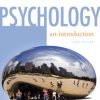
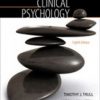
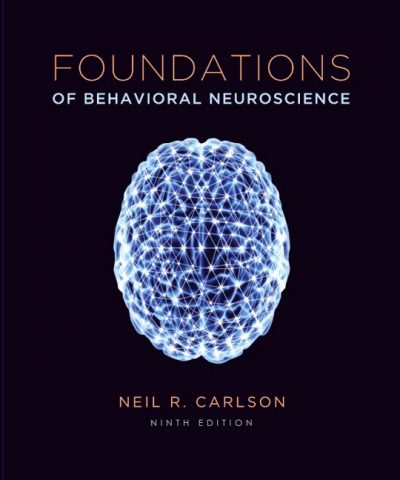
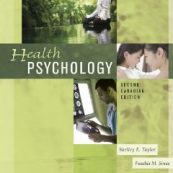
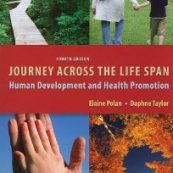
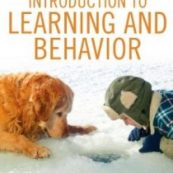
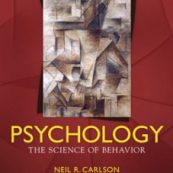
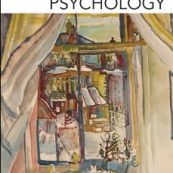
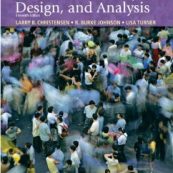
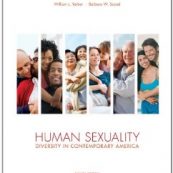
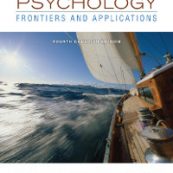
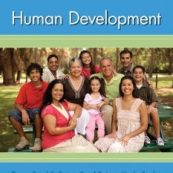
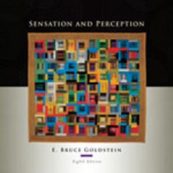
Reviews
There are no reviews yet.